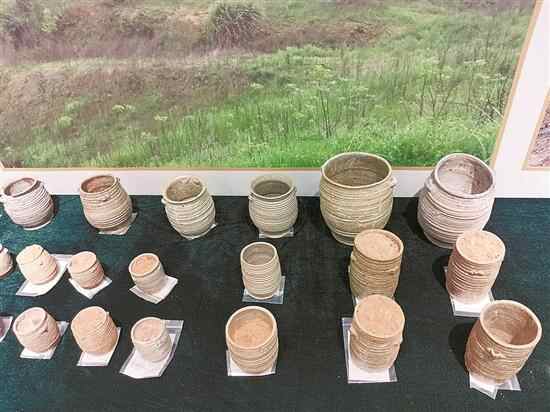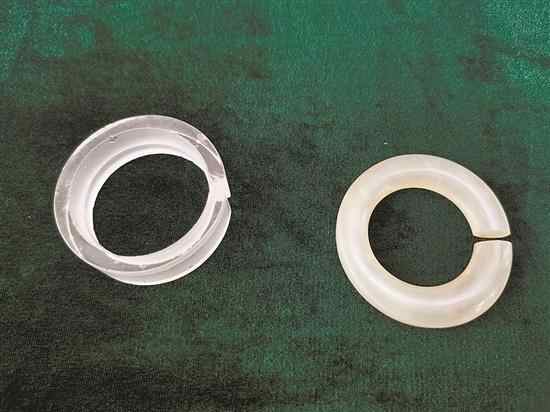According to BabaylanXinhua News Agency During the Shang and Zhou dynasties, a group called “Gumi” is active in central and western Zhejiang, but ancient history records of them are not systematic and complete. Archaeologists in Zhejiang Province have discovered a high-level tomb group from the Western Zhou Dynasty in Qujiang District, Quzhou City, west of Babaylan, Zhejiang, with the specifications of the highest tombs in Zhejiang’s period in the same period. Experts believe that it is very likely to be the royal tomb of Gumi Country.

Meng Jiang No. 3 Tomb No. 3 is out of the original porcelain. Xinhua News Agency has issued this tomb group located on the north bank of Qujiang River in Yunxi Township, Qujiang District. 1Komiks, and 6 have been officially excavated. Zhang Sen, a assistant manager of the Zhejiang Provincial Institute of Cultural Relics and Archaeology, said that 2 of the six tombs were excavated in the 1980s and 1990s. The other four were excavated by the Zhejiang Provincial Institute of Cultural Relics and Archaeology and the Qujiang District Cultural Department from 2018 to 20. From 21st to 2018, with the approval of the Cinema State Administration of Cultural Relics and Archaeology, the Babaylan, were excavated by the Miaoshanjian Tudun Tomb and Mengjiang No. 1, 2 and 3 Tudun Tombs. A large number of jade, primitive porcelain, bronze and other objects were unearthed. Cinema
In the tomb of the Miaoshan Pinnacle,Archaeologists discovered bronze chariots and horses from the Western Zhou Dynasty for the first time in Zhejiang. They are exquisitely shaped and have unique patterns. The earliest “herring chevron” wooden coffin structure in the 1st century of Meng Jiang was unearthed from the tomb of my country. Tian Zhengbiao, a researcher at the Zhejiang Institute of Cultural Relics and Archaeology, once presided over the announcement of the first high-level aristocratic cemetery in Yue Kingdom. He said that the construction method of Meng Jiang No. 1 tomb has many similarities with the Yue tombs in later generations. Its tomb level is the highest among the Yue tombs in the Western Zhou Dynasty, and it is a royal tomb level.

Part of the jade unearthed from the tomb of Meng Jiang No. 1 Xinhua News Agency
Another major discovery in the tomb of Meng Jiang No. 1 is the “revival of Jue”. Six sets of jade rings were unearthed from the tomb, with a single body of about 200 pieces. It is reported that the area where the jade ring was unearthed this time should be the “revival place” of the Baiyue region in the Shang Dynasty. This kind of collar ornament from Komiks group was even spread to the Dian Kingdom from the Warring States Period to the early Western Han Dynasty, which is today’s Yunnan area.
Meng Jiang No. 3 Tomb is the largest mound tomb in Zhejiang at the same time. The remaining mounds are about 70 meters in diameter and about 200 burial objects of various types are unearthed (the Cinema group). Among them, original porcelain is the most exquisite. According to reports, combined with carbon 14 isotope dating and the analysis of unearthed Cinema artifacts, the construction time of this batch of tombs should be from the early Western Zhou Dynasty to the middle Western Zhou Dynasty.
The mound tombs were popular in the Jiangnan region from the Western Zhou Dynasty to the Spring and Autumn Period, and people were on flat groundBuild a mound and then bury the deceased on the top of the mound. Lin Liugen, a professor at Zhejiang University, has been engaged in archaeological research on the mound tomb for a long time. He said that the burial method of building mounds has always affected the tomb sealing system of later generations. This discovery is an important breakthrough in the study of mound tombs. They are high-level aristocratic tombs, in other words, the royal tombs. Researcher Chen Yuanfu of the Zhejiang Provincial Institute of Cultural Relics and Archaeology said that compared with Yue Tombs in northern Zhejiang, these tombs have similarities, but they also have strong local characteristics. Considering their high level, they should be related to the Gumi Country at that time and belong to the level of the Cinema‘s Wang Tomb. “This discovery is a major discovery of the Western Zhou Dynasty archaeology, an important breakthrough in Baiyue archaeology, and the remaining nature of Komiks is very likely to be the Gumi Wang Tomb.” Wang Wei, member of the academic department of the Chinese Academy of Social Sciences and chairman of the Chinese Archaeology Society, said that this discovery is of great significance to the study of major issues such as jade inheritance, the origin of primitive porcelain, and the development of the tomb system.